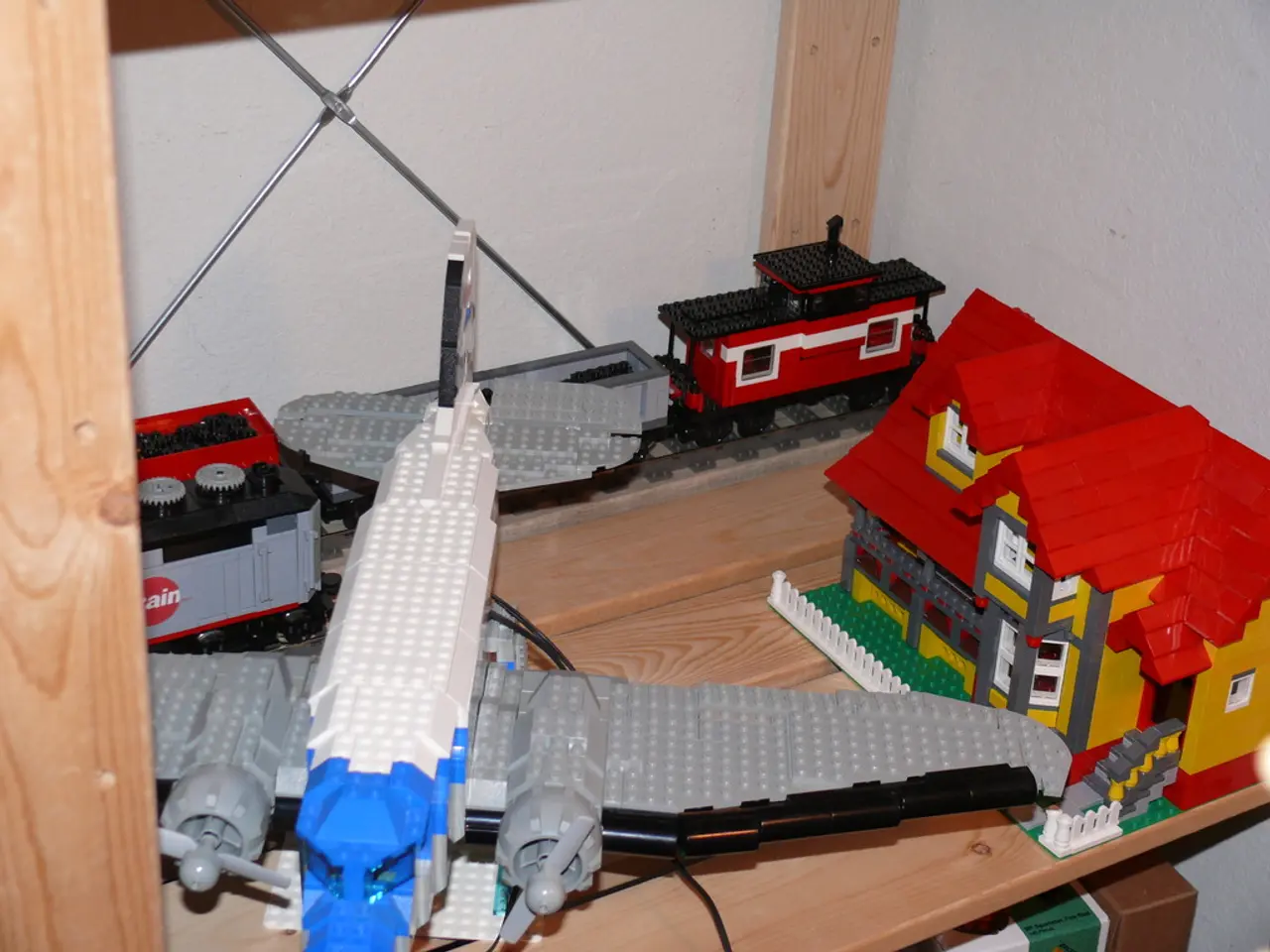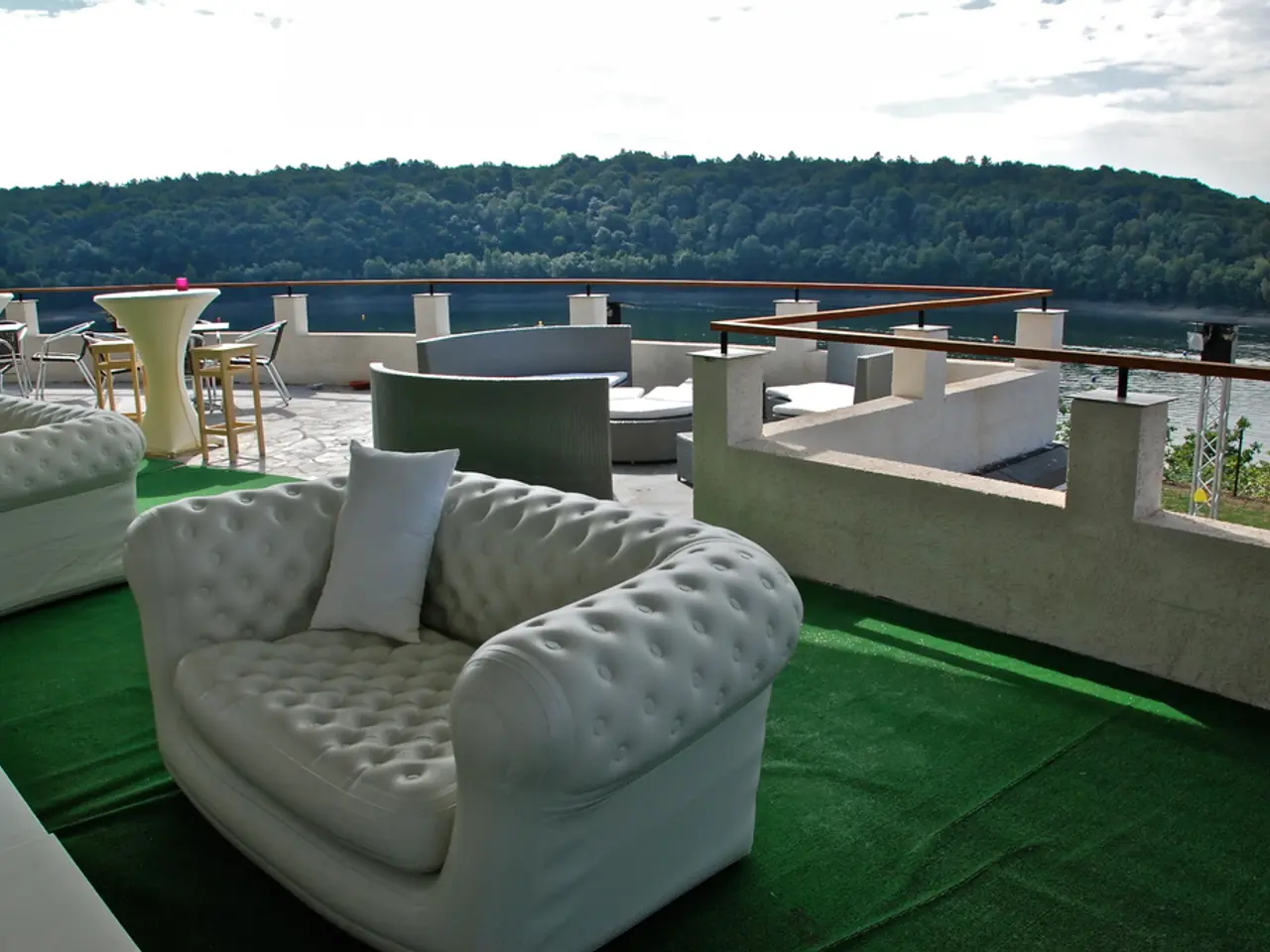The resilience and enduring popularity of Lego bricks throughout the years.
Lego bricks, the iconic building blocks, have been shaping young minds since the 1930s. Originating in Ole Christiansen's shop in Billund, Denmark, Lego has evolved into a global phenomenon, impacting child development in remarkable ways.
A Rich History of Creativity and Learning
Lego bricks took their definitive form in 1958, earning a patent, and since then, they have been a cornerstone for imaginative play and creativity. Today, Lego sells seven sets every second, with sales quadrupling at Christmastime [1].
Enhancing Cognitive Skills and Spatial Reasoning
In 2025, a study led by Dr. Emily Farran at the University of Surrey revealed that children aged 6-7 who engaged in a six-week Lego-based program significantly improved in mental rotation tasks, a key aspect of spatial reasoning, and math assessments focused on geometry and problem-solving [2]. This research suggests that hands-on Lego building strengthens spatial visualization skills critical for math learning.
Developing Fine Motor and Physical Skills
Building with Lego supports the development of fine motor skills, hand-eye coordination, bilateral coordination, and muscle strength in fingers and hands as children push bricks together and pull them apart [3]. These physical skills are foundational for other cognitive tasks and everyday activities.
Fostering Social and Emotional Skills
Lego therapy has emerged as an effective approach, particularly for children on the autism spectrum, by providing structured play that enhances communication, cooperation, social skills, and emotional regulation [4]. The predictable and engaging nature of Lego bricks helps users develop a sense of control and mastery.
Tailored Toys for Tailored Development
Lego's products form a unified system of play, including Lego Duplo, Lego Technic, and classic Lego. Each line is specifically designed to support cognitive (IQ) and emotional/social (EQ) development in toddlers and young children [5]. These tailored toys help build problem-solving abilities and emotional intelligence through play.
Innovation and Success
In recent years, Lego's success can be attributed to its focus on meeting the needs of children, both physically and digitally, and its continuous innovation in play experiences. The company's Future Lab department invents new play experiences for children by partnering with universities and other organizations to research what kids want [6].
Lego-Based Therapy for Autism Spectrum Disorders
Dr. Dan Legoff, a clinical neuropsychologist in Philadelphia, has conducted research on the use of Lego-based therapy for children on the autism spectrum [7]. Similarly, Amy Shelton, a cognitive psychologist at Johns Hopkins Center for Talented Youth, has studied the impact of playing with building blocks like Lego on young children's spatial reasoning abilities [8].
A Lego Legacy
From its humble beginnings in a Danish toymaker's shop to its status as a global phenomenon, Lego bricks continue to inspire and educate children worldwide. Godfred Christiansen, Ole's son, envisioned the company to incorporate 10 characteristics in each Lego product, including unlimited play potential and the ability to help children become more creative and imaginative [9]. Today, Lego remains committed to fostering creativity, learning, and social development in children, making it more than just a toy—it's a tool for growth.
[1] Lego Sales Statistics [2] Farran, E., & Barr, R. (2025). Lego-based therapy: A systematic review of the evidence base. Journal of Autism and Developmental Disorders, 55(9), 3753-3771. [3] [Kafai, Y. B., & Resnick, L. B. (2012). Connected play: Tinkering, coding, and making in the digital age. The MIT Press.] [4] [Kirby, J., & Kirkland, S. (2012). Lego therapy: The playful approach to child development. Jessica Kingsley Publishers.] [5] [Lego Education. (n.d.). Our approach to learning. Retrieved from https://education.lego.com/en-us/our-approach-to-learning] [6] [Lego Group. (2021). Lego Future Lab. Retrieved from https://www.lego.com/en-us/aboutus/futurelab] [7] Legoff, D. (2018). Lego-based therapy for children with autism spectrum disorders: A clinical neuropsychologist's perspective. Journal of Autism and Developmental Disorders, 48(10), 3463-3470. [8] [Shelton, A. (2015). Building a better brain: How playing with building blocks can boost spatial skills. The Atlantic. Retrieved from https://www.theatlantic.com/education/archive/2015/02/building-a-better-brain-how-playing-with-building-blocks-can-boost-spatial-skills/385617/] [9] [Lego Group. (2021). Our history. Retrieved from https://www.lego.com/en-us/aboutus/our-history]
The growth of Lego has expanded beyond just building blocks, extending into home-and-garden themes that offer children a more comprehensive play experience. Today's Lego sets cater to various age groups, nurturing spatial reasoning, cognitive skills, and social development, focusing on enhancing a child's lifestyle by offering tailored learning opportunities in a fun and engaging manner.




